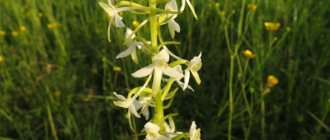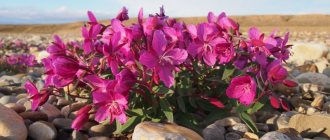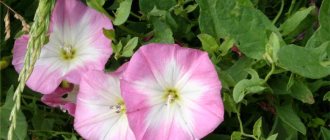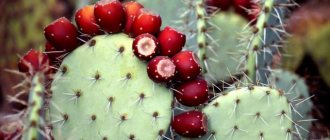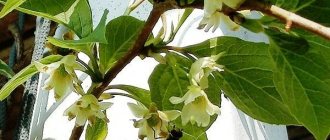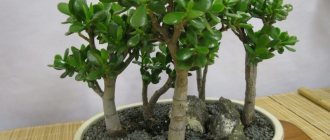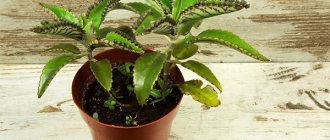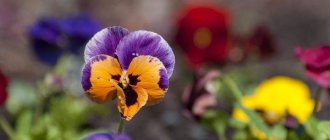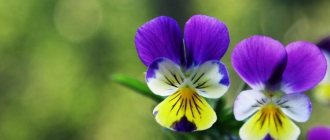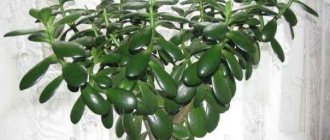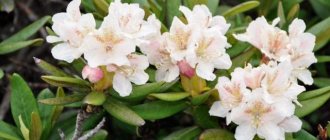Are oregano and thyme the same thing?
Oregano and thyme are different plants, although they both have medicinal properties and are widely used in cooking. The differences are noticeable even externally. Thyme is a subshrub that spreads along the ground, while oregano herb (oregano), on the contrary, is a tall-growing species. The aroma of the flowers of the plants is very similar, but the inflorescences are very different.
What diseases does oregano treat?
Oregano herb helps with various types of diseases, from respiratory problems to allergies.
- Oregano is used to treat coughs. Gargle with tinctures and decoctions.
- Oregano herb baths are used for allergies, especially with external manifestations. In other cases, teas are used.
- Attacks of hypertension are relieved with decoctions. Oregano lowers blood pressure.
- The infusion helps with pain - headache, dental, muscle.
- Decoctions are used to treat depression, hysteria, and insomnia.
- For asthma, they use inhalation and drink tea.
- Baldness is also fought with the help of the plant, rinsed with infusions and decoctions.
Important! Oregano has diuretic properties. In some cases this is useful, in other cases it is only harmful.
Description
Oregano has many names, including:
- forest mint;
- amulet;
- motherboard;
- darling;
- bee lover;
- zenivka;
- boron bone-breaking grass.
This perennial crop belongs to the Yastnotkov family.
In nature, this plant can be found in Europe and the Mediterranean. Oregano most often grows on:
- clearings;
- meadows;
- river banks;
- hillsides.
The top of the plant is branched. The stem is tetrahedral, covered with small hairs. The height of oregano reaches an average of 60 cm, but it can grow up to 1 meter. The plant has a branched and creeping root system. The leaves are oblong and ovoid in shape.
Oregano blooms in July; the flowers are small in size and have a purple tint; the inflorescences are thyroid-paniculate. The fruit is oval, divided into 4 dry nuts.
Oregano grows in almost any soil. Has a pleasant aroma. The plant prefers open areas. Oregano tolerates the cold and winter months easily and comes to life already in early March.
Where does Oregano grow?
You will find oregano at the edge of the forest,
Among the dense bushes.
You'll see it on the top of her head.
Dense panicle of flowers.
Our grandmothers and great-grandmothers, who lived in remote villages, did not have the opportunity to skimp at the pharmacy, so they prepared medicinal herbs themselves. From them this tradition was passed on to our generation. Many people try to grow medicinal plants in their dachas. Fragrant bushes called oregano also take root well on plots of land. We invite you to read more about the photo of the plant where oregano grows.
In some sources, the mother is called the queen of forest edges. She loves sunny slopes and meadows. With its aroma it attracts many bees and butterflies, sometimes for this it is called a bee lover. Sometimes the plant resembles thyme. The favorite habitat is the forest-steppe zone. The Mediterranean is considered to be the motherland's homeland. Now it is found in many Western and Eastern European countries. Oregano also migrated to the Caucasus, Kazakhstan, and Southern Siberia.
Where does oregano grow, a favorite herb not only in Russia? It grows in almost all regions except the Far North. It is especially common in Primorye, the Amur region, and the Far East. The plant has taken root well throughout Ukraine and Belarus.
The Americans and French learned to cultivate oregano. Forest glades and edges, river valleys, clearings, open grassy areas, and hilly slopes became the mother’s favorite places. Oregano loves a lot of light and prefers dry places.
Chemical composition
More than 1% of essential oil is contained in the leaves and stems of the crop. This plant also contains the following elements:
- 20% carvacrol;
- up to 10% thymol;
- 12.5% sesquiterpene;
- 15% free alcohols;
- up to 5% geranyl acetate;
- vitamins B1, B2, C, D, A, K.
Also contains:
- tannins,
- fixed oils,
- ascorbic acid.
There are only 25 kcal in 100 grams of the plant.
The properties of oregano are determined by the chemical composition of the plant:
- Essential oils help cope with neurosis and get rid of insomnia.
- Tannins have choleretic and diuretic effects.
- Timol is an antiseptic.
- Alcohols and ascorbic acid help increase appetite.
Basics of oregano care: fertilization and feeding, disease and pest control
Drought is contraindicated for oregano, so watering is one of the main care requirements. Make sure the soil dries out, loosen the soil, and remove weeds. From early spring until the harvest of the fragrant harvest, apply fertilizers, which will only be needed from the second year. It can be saltpeter or mullein diluted with water. Similar fertilizers can be added in the summer.
Attention! If you grow mother plant only as an ornamental crop, fertilizers are contraindicated for it, otherwise the flower will lose its attractiveness over time.
Despite careful care, oregano does not develop well during the first season. Therefore, it is recommended to remove unopened buds on annual bushes. This will ensure abundant flowering and significant growth of the mother plant from the second year of life of the bushes. Every 5-6 years, replant the perennial, and in the spring, break off parts of last year’s shoots.
Pests rarely attack oregano
The spicy aroma of this herb repels many insects, so that pests and diseases do not bother the crop. The only exception would be the cicada, which loves oregano for its nectar. Otherwise, there are usually no difficulties with care. Therefore, many owners are happy to grow beautiful, fragrant oregano, drink aromatic tea from it and add the leaves to their culinary masterpieces.
Useful properties of the plant
- For insomnia, increased nervous irritation, neuroses, hysterics, and stressful situations, a decoction prepared from the leaves and flowers of oregano, the essential oils of which have a calming effect, will help.
- An infusion or decoction of oregano will help relieve pain, improve intestinal motility, cope with symptoms of flatulence, and as a prophylactic for gastrointestinal disorders.
- Drinking oregano tea is recommended for headaches and migraines, as this plant has an antispasmodic effect.
- The plant can be used as a remedy for respiratory diseases, since oregano helps in the removal of sputum, as well as bronchitis and pneumonia.
- This culture is used in the treatment of adults and children who have become infected with worms.
- Oregano will also help cope with diseases of the genitourinary system and liver, since this plant has a choleretic and diuretic effect.
- A decoction of oregano will help eliminate rashes, acne, boils, and pimples. The plant helps to quickly cope with skin irritation, allergies, psoriasis, and other dermatological ailments.
- To prevent cancer, it is also recommended to regularly drink oregano tea, since the components contained in the leaves, stems and flowers of the plant will help protect the body from the spread of cancer cells.
- Oregano is used to combat cellulite and improve skin condition, as it helps to easily restore the condition of the subcutaneous fat layer.
- Preparations prepared from this plant help restore the menstrual cycle and easily cope with the painful manifestations of PMS, but such treatment can only be carried out under the supervision of a doctor.
- Nursing mothers will produce milk much more actively if they take oregano preparations correctly.
- Oregano is a unique antiseptic gift from nature itself.
- Inhalation with a decoction or with the addition of oregano essential oil helps with colds, coughs and eases breathing.
- Sore joints and rheumatic symptoms can be treated with oregano essential oil, which is recommended to be rubbed into problem areas.
Oregano decoctions and infusions will also help normalize blood pressure, improve appetite, and get rid of toothache.
Watch the video! Oregano is a herb that restores the body
For women
Oregano is of particular value for women's health.
- Medicines prepared from the plant are actively used in gynecology and help cope with polycystic ovary syndrome, cervical erosion, amenoria and other pathologies of the reproductive system.
- Infusions and decoctions of oregano will also help in the fight against bleeding; they are recommended for use by women after childbirth to speed up the healing of the uterine mucosa.
- Oregano will also help cope with pain during menstruation and the unpleasant symptoms of menopause.
- An infusion of oregano will help cope with vaginal itching and other female diseases, and this remedy will also help stabilize the monthly cycle.
- Nursing mothers with insufficient lactation need to consume oregano extracts, which activate the production of breast milk.
- Oregano decoction helps to cope with severe hair loss, improve its condition and accelerate growth.
- Drinking tea with oregano helps remove toxins from the body, improve the functioning of the gastrointestinal tract and cleanse the intestines.
- You can add other medicinal herbs to the oregano decoction to enhance their positive effect.
Monastic tea
To prepare “Monastic tea” you need to take the following components:
- St. John's wort -1 tbsp. l,
- chopped elecampane root - 1 tbsp. l,
- oregano -1 tbsp. l;
- rose hips – 100 gr.
- should be mixed and filled with water (3 liters);
- Boil;
- Leave for 1 hour;
- The drink can be stored in the refrigerator and consumed cold.
Important! Do not forget about contraindications.
Decoction
To prepare a decoction with oregano you need to take:
- oregano 100 gr;
- thyme 50 gr;
- yarrow 50 g;
- honey 100 gr.
The resulting mixture is poured with boiling water and infused for 2 days. It is recommended to drink the infusion 200 ml 3 times a day. The course should be carried out within a week.
Infusion
During menopause, you should regularly drink an infusion prepared according to the following recipe:
- oregano 50 gr;
- thyme 50 gr.
- The herbs are crushed and placed in one container;
- 100 ml of alcohol should also be poured there;
- Infuse the resulting mixture for a week;
- The infusion should be consumed 1 teaspoon 3 times a day. The duration of the course is one month.
Growing oregano with seedlings
The seedling method of obtaining oregano seedlings is more expensive, but it is also more effective. Preparation for the seedling method usually begins in the second ten days of April, when the soil is prepared. The soil for seedlings can consist of equal parts of river sand, ordinary garden soil and humus. At the very bottom of the container, having made sure in advance that it has drainage holes, you need to put a layer of drainage a couple of centimeters thick, and pour pre-prepared nutrient soil on top.
Before sowing, oregano seeds should be soaked in a damp cloth for a day, and then placed in the soil mixture. The planting depth is the same - about a centimeter. After sowing oregano, the container should be covered with a plastic lid that has holes for ventilation, and the container should be placed in any room where there is enough light, but direct rays do not fall on it. In this case, you need to maintain the temperature in the room at 19-21 degrees above zero, keep the soil slightly moist, and also ventilate the air in the room from time to time.
As soon as the plants form a pair of true leaves, it is necessary to pick them, that is, plant the oregano seedlings in separate pots.
Before planting in open ground, oregano seedlings must be hardened off for a couple of days, for which the temperature must be lowered, bringing it to normal street temperatures both during the day and at night.
Oregano seedlings can be planted in open ground as soon as a stable positive temperature has been established. All you have to do is carefully remove the seedlings from the cups and place them in the soil, trying not to destroy the earthen lump. After this, the soil around the plant needs to be thoroughly compacted and the surface mulched with humus, a layer of a couple of centimeters, this will retain moisture and protect it from overheating.
Next season, with proper attention and care, there should be flowering. About a week before it is necessary to fertilize the plants with nitroammophos. To do this, you need to dilute a tablespoon of nitroammophoska into half a bucket of water; this is enough for 12-15 plants.
Oregano during pregnancy: contraindications and use
Even with a normal pregnancy, oregano will be useful. Expectant mothers are recommended to use the following recipe:
- 100g oregano;
- pour 1 liter of boiling water;
- Drink the resulting decoction throughout the day.
Advice! Increased tone of the uterine walls is a reason to refuse to use this plant, since the components in its composition can cause premature birth or miscarriage.
For men
Alcohol addiction in men can be overcome with the help of a decoction of oregano, but at the same time sexual activity will decrease.
Attention! Regular use of this drug can lead to the development of impotence.
For children
- To treat children from rickets and scrofula, oregano is used in folk medicine.
- Bathing in oregano decoction will help eliminate redness on your baby’s body and cope with allergic rashes.
- Soothing tea with oregano is recommended for children with increased excitability and sleep disorders.
- Bloating, colic and flatulence in a child can also be overcome with a drink based on this amazing plant.
- This culture, used as an infusion, will help relieve inflammation in the throat with a sore throat and eliminate stomatitis in a child.
- Herbal infusions, of which oregano is an integral part, are used to relieve cough in children with whooping cough. To treat colds and relieve asthma attacks, it is also recommended to use oregano. It should be remembered that treatment of a child with decoctions of this herb should only be carried out under the constant supervision of a doctor. Because the components of this plant can have a serious impact on puberty, especially in adolescents.
How to grow oregano?
The easiest way to get oregano yourself is to grow it by simply sowing seeds in the ground. However, oregano is usually grown as seedlings, then there is a high probability that the seedlings will bloom this year.
Choosing a place for oregano
When preparing the soil, you must take into account that oregano is a plant that loves open and well-lit areas with leveled soil without microdepressions, without prolonged stagnation of moisture (it doesn’t matter - melt or rain). When planting oregano on a plot, do not forget that this plant will exist on it for several years and will not need replanting at all.
The soil for planting oregano, in addition to levelness and moderate humidity, must be moderately fertile. To do this, per square meter of soil you need to add 6-7 kg of well-rotted manure or humus, 250-300 grams of wood ash and a tablespoon of nitroammophoska. If you are planning to plant oregano in the spring, then you should fertilize the soil in this way in the autumn, it will be just fine. When digging the soil and applying fertilizers, do not forget to also destroy the weeds in the soil; it is especially important to remove the roots of wheatgrass.
In the spring, before digging up the soil again, already oriented towards planting oregano, it is necessary to add 2-5 kg of humus or well-rotted manure and a couple of tablespoons of nitroammophoska.
The soil needs to be leveled as well as possible so that there are no lumps. This must be done taking into account that oregano planting material is, as a rule, very small and seedlings will take root less well on soil with large lumps. When the soil is leveled, all that remains is to make grooves in the soil and water them using melt or rain water, but always at room temperature.
Before sowing, oregano seeds should be mixed with river sand in equal parts and sown in previously prepared furrows, planted to a depth of one centimeter. River sand is necessary to ensure that the seeds are more evenly distributed throughout the bed. Afterwards, you need to sprinkle the seeds with soil and mulch the surface with humus. This method is simple, but it will help inhibit the evaporation of moisture from the soil surface, creating a suitable microclimate inside the soil.
The next furrow for sowing oregano seeds must be made at a distance of 23-26 centimeters from the first. After about 20 days, and sometimes a little more, shoots will definitely appear. As soon as the seedlings form a pair of true leaves, they can be planted in a new location. When picking seedlings, it is important to leave a distance of 18-19 cm between them. Those bushes that turned out to be superfluous during picking can be planted in empty areas of the site.
After planting, oregano seedlings need to be periodically watered, weed control, and a little shade provided in hot weather. About two months after sowing the seeds and receiving the first shoots, these will already be full-fledged independent plants.
Oregano, or Oregano (Origanum vulgare).
Oregano in cosmetology
This aromatic plant is used very often in the preparation of cosmetics. Oregano-based products are used to care for the face, body and hair. This plant became famous due to its unique properties:
- elimination of skin diseases, acne, acne;
- restoration of the skin, rejuvenation;
- cleansing the scalp from dandruff, improving hair structure;
- giving the skin elasticity, firmness, and silkiness.
Many masks and creams are made based on oregano. These products can be used both to maintain the freshness of young skin and to aging skin. Oregano also contains a special pigment that allows you to create a tanning effect.
You can prepare cosmetics from this plant at home.
Watch the video! Oregano (oregano) medicinal properties
Mask
For face
- Art. spoons of fresh oregano leaves;
- pour 1 glass of boiling water;
- Hold for 10 minutes;
- Add protein;
- Mix and apply to hair for 30 minutes;
- After half an hour, wash off the mask.
Using this product will help to significantly tighten the pores of the scalp, especially if it is oily.
Anti-wrinkle
- 1 tbsp chopped oregano;
- Fill with hot water (100ml);
- Leave for 3 hours;
- Next, the mixture is filtered and 1 tablespoon of olive oil is added to it.
The product should be applied to the face and washed off with water after half an hour.
To strengthen hair
- 3 tbsp chopped oregano;
- pour 500 mg of boiling water;
- leave for 30 minutes;
- Strain the cooled solution and add 2 tablespoons of honey.
Rub the product into the scalp and leave for half an hour, then rinse with water. This mask will help improve the appearance of your hair and prevent hair loss.
Ice for facial skin
- 2 tablespoons of leaves and stems of the plant should be chopped;
- pour boiling water (200 mg);
- leave to brew for 25 minutes;
- the liquid is filtered;
- pour into prepared small molds and place in the freezer.
It is recommended to wipe your face with the resulting ice pieces in the morning. This procedure will help make your facial skin fresh and tightened.
Decoction for rinsing hair
- 4 tbsp chopped oregano;
- Add 0.5 liters of boiling water;
- Boil the mixture over low heat for 10 minutes after boiling;
- The mixture should be left to sit for 1 hour.
The solution is recommended to be used as a rinse after each hair wash. The product will help make your hair silky, shiny, and also get rid of dandruff.
Cleansing toner
- 1 tbsp chopped oregano;
- pour 1 glass of boiling water;
- leave for 30 minutes, then filter.
The resulting infusion should be wiped on the face in the morning and before bed. After some time after use, the result will be noticeable - the skin of the face will become smooth and velvety, and also noticeably cleansed.
An infusion of oregano added to a cool bath will help relieve swelling in the legs after a long walk.
Oregano is an excellent honey plant
Oregano is an excellent nectar and honey plant, with a productivity of up to 120 kg of honey per hectare! Of course, you are unlikely to plant this aromatic plant on such a large scale unless you are producing honey for industrial purposes, but know that bees and butterflies have great respect for oregano. This means that they will willingly visit your site, simultaneously pollinating other cultivated species of the garden.
- 6 Secrets of a Flower Garden That Attracts Bees
What can you do to make bees love your garden?
Traditional medicine recipes
Decoctions and infusions prepared with oregano have long helped people cope with various diseases:
Insomnia
An infusion that will help cope with insomnia is very easy to prepare. It is enough to take:
- 4 tbsp chopped herbs;
- pour 2 cups boiling water;
- then leave to infuse for 25 minutes.
Neuroses, epilepsy
- 2 tbsp herbs;
- pour 0.5 cups of vodka;
- leave for a week in a dark place;
- after which the mixture is filtered.
The resulting solution should be consumed before meals, 1 tsp.
Allergies in children
- oregano flowers (3 tbsp);
- pour 2 liters of hot water;
- leave for 30 minutes.
The strained infusion is used to bathe the child.
Runny nose
Dried oregano flowers are ground into powder and used as a snuff.
Angina
- In 0.5 cups of boiling water;
- Add 1 tbsp chopped oregano;
- Leave for 25 minutes.
The composition is filtered and used for gargling.
Menstrual irregularities
- 1 tbsp herb;
- pour hot water;
- leave for 40 minutes;
- after which it is filtered and used daily, drinking 1 glass per day.
Cataract
- 1 glass of boiling water;
- pour 1 tablespoon of chopped herbs;
- leave for 1 hour;
- filter and take half a glass 3 times a day 20 minutes before meals.
The resulting remedy helps slow the spread of cataracts, and can also be used for multiple sclerosis and epilepsy.
It is recommended to drink the juice of the plant to eliminate attacks of epilepsy, for colds and to improve the functioning of the digestive organs. This remedy is used as a hemostatic and sedative. Skin diseases can also be treated using oregano juice.
Compresses against flatulence and abdominal pain in children can be prepared from steamed oregano leaves.
Vegetative methods of propagating plants on the site
Oregano has a good survival rate. Therefore, in addition to the seed method, there are the following options for propagating the crop:
- Division of an adult plant. The bush is removed from the ground and several parts are formed from it. Each one should have at least 4-5 strong buds. For new specimens, dig holes 0.3x0.5 m in size, water them and plant plants.
- Cuttings. Take several shoots, making sure that each of them has 3-5 internodes. Cover with film and keep in a mini-greenhouse until the cutting begins to develop.
Oregano reproduces well by seeds, cuttings, and dividing the bush - Reproduction by layering. Bend the stem toward the ground and secure it with a staple. Sprinkle the area and moisten. Please note: the “crown” of the stem should be on the outside. The cuttings will take root within a year. After this, you can separate it with a shovel and plan to transplant a new bush to a permanent place. Another option is to simply dig in some strong shoots throughout the growing season.
Advice. It is best to propagate the mother plant by vegetative methods in spring or early autumn.
Oregano tea
Tea made from oregano has a pleasant aroma. A cup of this decoction will help relieve fatigue, as well as fill the body with useful substances. You can prepare this drink as follows:
- 1 tbsp chopped herbs;
- pour 1 cup boiling water;
- leave to infuse for 10 minutes.
This tea should only be consumed warm. It is also recommended to use it to relieve nervous tension, rheumatism and liver disease.
Advice! This solution will be useful for bronchitis.
It should also be used for gynecological diseases. The decoction has a diuretic and diaphoretic effect, helps remove excess water from the body and cope with infection in the kidneys.
Regular use of the infusion improves appetite, strengthens the immune system, and also eliminates bad breath.
What are the benefits of oregano for the body?
The beneficial effect that the oregano plant has on the body is noticeable from the first use. The herb affects health and is beneficial as a beauty product. The plant affects men and women differently. There is little harm from grass, especially for girls.
Properties of oregano for women
The benefits of oregano for women do not extend to pregnancy. In other cases, the plant:
- stimulates menstruation;
- regulates hormonal levels;
- stimulates milk formation;
- useful for cervical erosion;
- During menopause, oregano relieves irritability and relieves hot flashes.
Important! Excessive consumption of the decoction will cause harm instead of benefit, especially for people with low blood pressure. But for hypertension, it is useful to drink tea regularly.
Benefits of oregano for men
Oregano has a negative effect on potency; it should not be abused, especially in combination with an unhealthy lifestyle and smoking. To strengthen the immune system and treat colds, it is permissible to take extracts and preparations from the plant, without exceeding the dose determined by the doctor; then the herb will not cause harm.
Collection and storage of medicinal herbs
The upper part of the plant is used for cosmetic and medicinal purposes. At the end of July, when oregano is actively blooming, the plant should be collected. You can only collect healthy shoots with blossoming flowers and green leaves.
The raw materials should be dried outdoors under a canopy.
Oregano should be stored separately from other herbs in a cardboard box or glass jar. The container with dry grass should be in a dark and dry place.
Reference! For 3 years, if properly stored, oregano can retain its medicinal properties.
Leaves and flowers of the plant, when frozen, can be stored in the refrigerator for 2 years.
When and how to harvest
July-August is the flowering time of oregano; it is during this period that the harvest is harvested. Only the upper part of the stems is harvested; the shoots themselves are not pulled, so as not to lead to the death of the plant. To prepare the motherboard, use special scissors, pruners or a knife. The tops of the stems with flowers and leaves are cut off at a height of 15-25 cm in dry weather.
Cut stems are collected in bunches, tied and hung in a warm and dark place where there is access to air. You can spread the stems on paper or water-repellent fabric. High-quality dried raw materials are considered to be preparations that have not changed their color and have retained their aroma and spicy taste. The dried mother plant is threshed, the coarse stems are selected, and placed in glass jars tightly closed with a lid.
Contraindications
- Pregnant women should use oregano in any form with caution, since the components contained in the plant, affecting the tone of the walls of the uterus, can cause miscarriage or premature birth.
- People suffering from peptic ulcers, exacerbation of gastritis and other diseases of the gastrointestinal tract are not recommended to eat the plant fresh.
- People who suffer from individual intolerance should not use oregano in any form.
- Constant, unlimited use of oregano decoction contributes to the appearance of headaches, dizziness, nausea, and allergic rashes.
- Constipation can be caused by tannins contained in the plant.
- Heartburn and irritation of the mucous membranes can be caused by ascorbic acid, which is also present in the leaves and stems of oregano.
- Uterine bleeding is caused by the use of a concentrated decoction of oregano.
- Eating oregano can affect male potency, so men should not drink decoction and tea based on it often.
Oregano can be used as a medicinal product only after consultation with your doctor.
Watch the video! Oregano - medicinal properties
Oregano is a wonderful neighbor for legumes in the garden
But our site is still a garden site, so finally we cannot fail to mention one more useful property of oregano. It (along with basil, borage, lavender, rosemary, yarrow) is an excellent neighbor for legumes in mixed plantings, improving the development of the latter.
- Mixed plantings: choosing the best neighbors for plants
Let's figure out which plants get along best with common garden crops.
Well, have we convinced you that oregano is an indispensable component of any herb garden, since its benefits can hardly be overestimated? You may also be interested in 14 reasons to plant mint in your garden.
